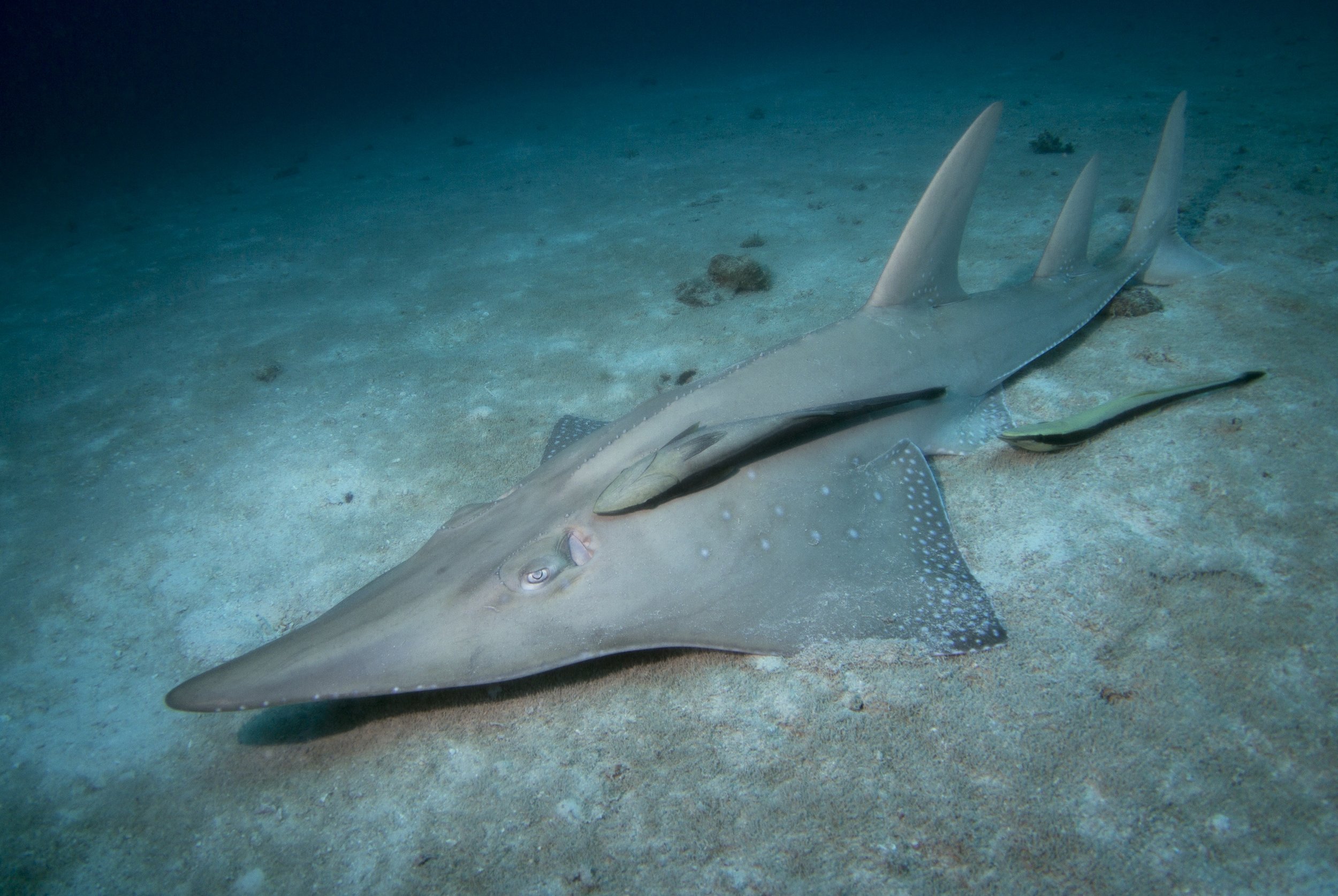Wedgefish
Elke Bojanowski, Red Sea Sharks
The governments of Bangladesh, Benin, Bhutan, Brazil, Burkina Faso, Cabo Verde, Chad, Cote d’Ivoire, Egypt, Ethiopia, the European Union and its Member States, Fiji, Gabon, Gambia, India, Jordan, Kenya, Lebanon, Maldives, Mali, Mexico, Monaco, Nepal, Niger, Nigeria, Palau, Philippines, Saudi Arabia, Senegal, Seychelles, Sri Lanka, Sudan, Syrian Arab Republic, Togo and Ukraine have proposed all 10 species of wedgefish (Rhinidae) for listing on CITES Appendix II.
Wedgefish species are the third most threatened family of chondrichthyan fishes globally. Lack of global management and high value fins on the international market have led to widespread and severe population declines in these species. Parties to CITES have identified wedgefish as in clear need of additional management—resulting in the largest number of Parties ever to sign on as coproponents for a proposal in the history of the CITES Convention.
Danny Copeland
Why are wedgefish so vulnerable?
Wedgefish species are slow growing, late to reach reproductive maturity and when they do mature, they produce very few young. Compounding their biological vulnerability, wedgefish species reside in coastal habitats, which makes them easier to catch from shore as well as being extremely vulnerable to multiple gear types. The large size of their fins, which are valued among the highest in trade means that even when wedgefish are caught as bycatch they are kept and sold.
THREATS AND INTERNATIONAL TRADE
The meat of wedgefish is often consumed locally, however, the primary incentive for retaining wedgefish is the value of their fins. A recent study concluded wedgefish fins hold the highest value of all fins found for sale in the global fin trade and retail hub of Hong Kong. Guitarfish and wedgefish have a specific trade category ("Qun Chi") in the Hong Kong shark fin retail market. Wedgefishes form a significant part of this category, making Rhinidae among the 20 most frequently traded elasmobranch families. This profitable and largely unregulated trade has driven population declines up to 86% in some areas over a period of only 5 years. In Pakistan, data on guitarfishes show sharp reductions in just one generation – from over 2,018 metric tons landed in the year 2000 to 403 metric tons in the year 2011.
Gulf Elasmo Project - Rima W. Jabado
Rhynchotabus species at the market | Rima W. Jabado
Need for global management
For many wedgefish species, an Appendix II listing will ensure that governments will finally begin to manage the catch and trade in these highly vulnerable species.


